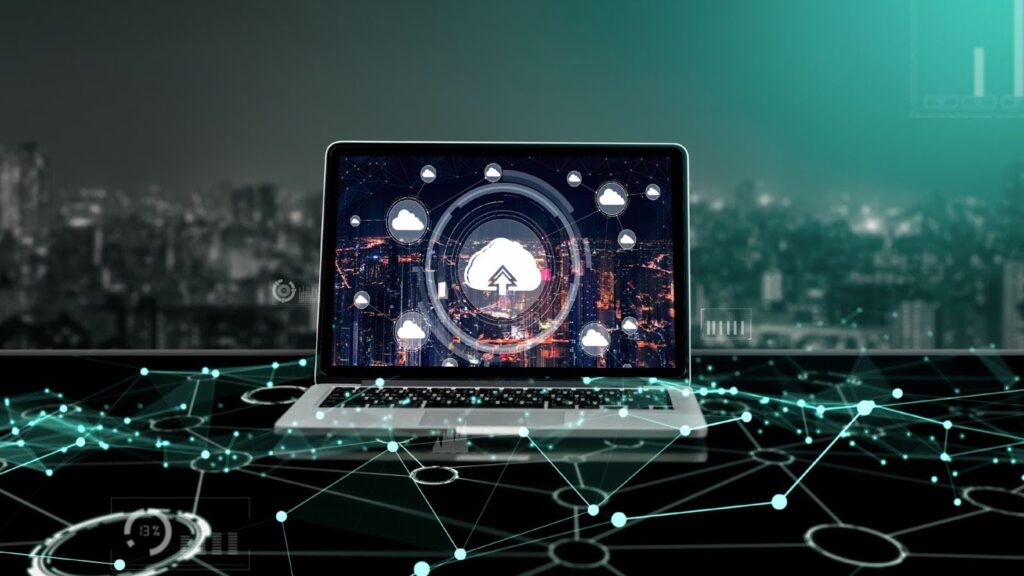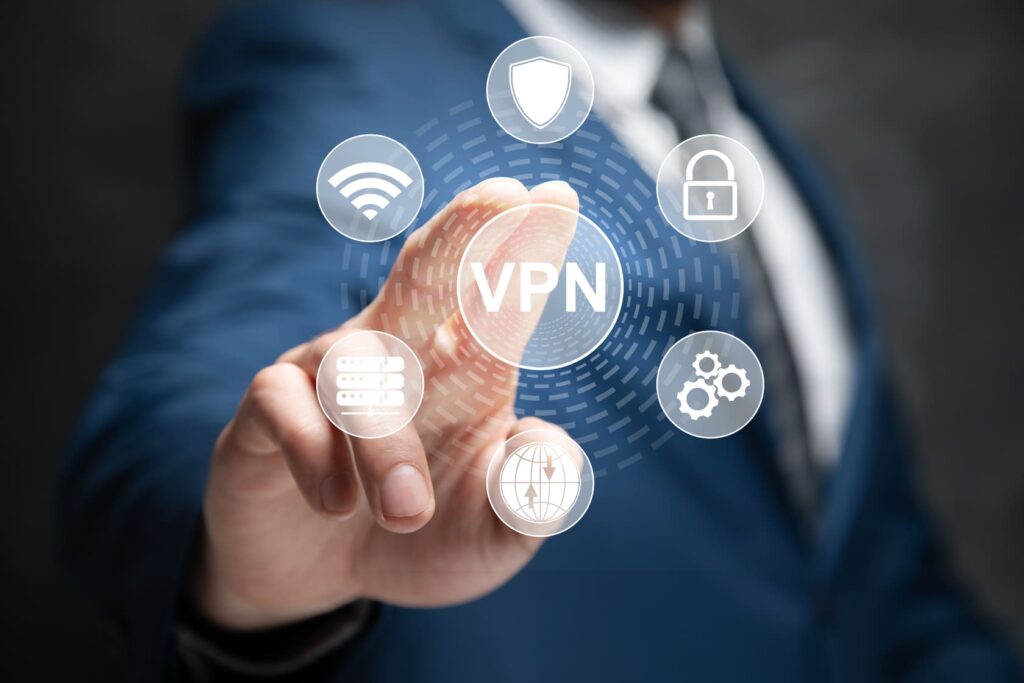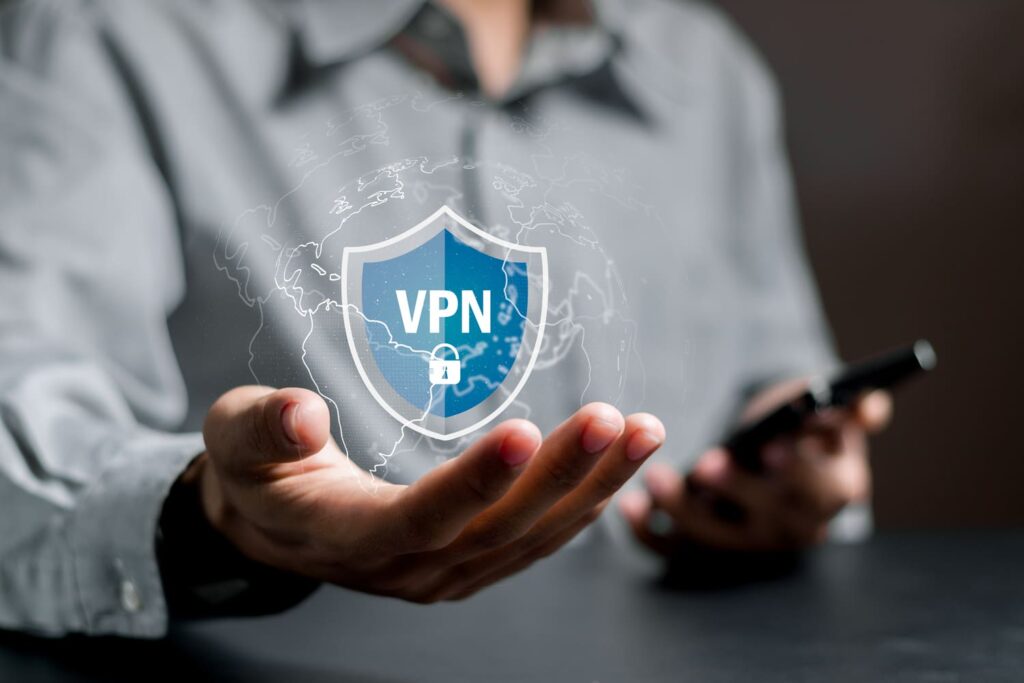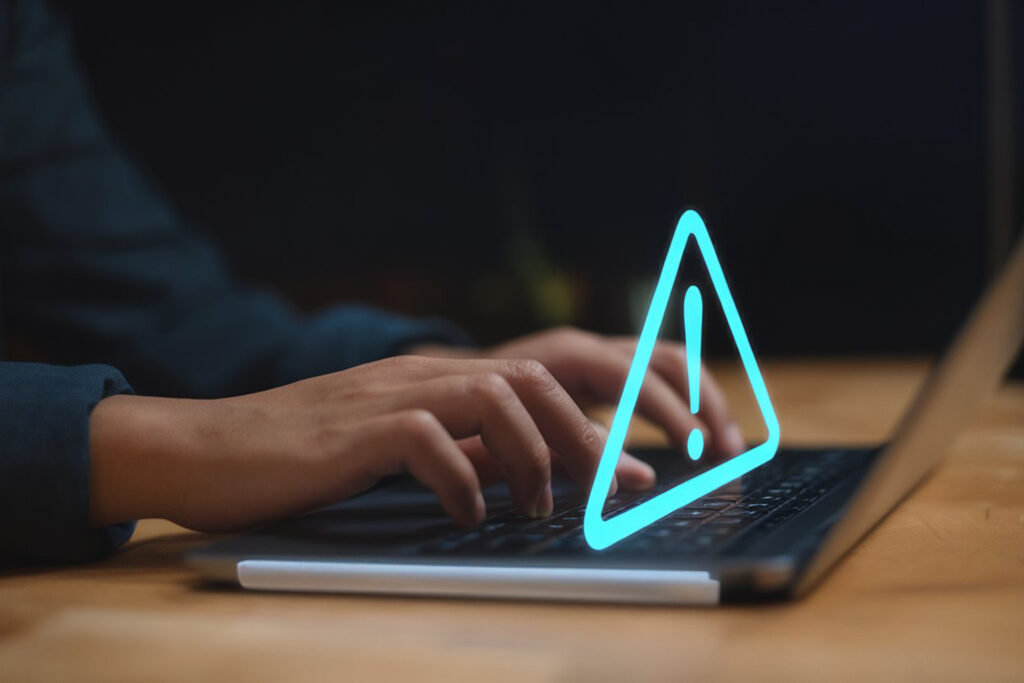Introduction
In a scenario where digital threats multiply like high -speed cars on a track without control, protecting your company's infrastructure requires more than barriers: it requires intelligence, reaction time and real -time control.
IBM's Cost of A Data Breach 2024 report , the average cost of a data violation in Brazil already exceeds R $ 6.75 million , an increase that accompanies the complexity and sophistication of cyber attacks in increasingly interconnected environments.
This reality imposes a new pattern: security needs to be continuous, predictive and orchestrated. And this is where Skyone differs. By integrating Fortigate, Fortinet Firewall the platform operates as a true digital security telemetry system , offering visibility, performance and immediate reaction.
In this article, you will understand why this combination represents the new level of corporate cyber protection and how it can ensure safety without braking innovation.
Enjoy the read!
What is a firewall and why is it essential for cybersecurity?
Before we talk about cutting -edge technology or complex integrations, we need to understand the base : without a firewall , there is no effective digital security. And even today, many companies underestimate this component , treating it as a basic "barrier", when in fact, it is the silent orchestrator of cyber defense.
In times of 100% connected operations, Firewall is no longer a simple external access blocker . He became a decision agent, capable of distinguishing legitimate traffic from disguised threats in milliseconds without compromising the network's performance.
Next, we will better understand how it works in practice, and why its role is increasingly strategic in modern safety architecture.
Concept and operation of a firewall
If we think of the company's digital infrastructure as a corporate race track (with data input and output flows happening all the time), Firewall acts as the control tower that authorizes, inspects and records each movement.
Technically, it is a system that analyzes data packages that enter and leave the network , applying policies that define what is allowed, blocked or monitored. But firewalls do more: they analyze the context, not just the content . They know, for example, if access to the database at 3 am through an unknown IP is common or a risk signal.
This layer of intelligence is essential because, unlike an antivirus, which reacts to what is already known, the firewall acts preventively , controlling traffic before the threat materializes.
As firewalls protect against digital threats
It is not just about preventing what is "bad". It is a matter of allowing what is safe , and this requires criterion, pattern analysis and automated decision making.
New generation firewalls have
- Identify and block malicious, even if encrypted traffic;
- Detect anomalies in traffic behavior, such as data exapage at atypical times;
- Protect against DDOS type attacks, which overload the network with fake accesses;
- Act as the first layer for zero Trust architectures, limiting access by context and risk.
The result? Less exposure, more control , and a digital environment that not only resists, but responds with intelligence.
Understanding this central role of firewall , you can see why the choice of right technology makes all the difference . And that's exactly what we'll see below: why Firewall Fortinet has become the reference in network security, and how Fortigate technology takes this concept to a new protection level.
Fortinet and Fortigate: The technology behind net protection
When the challenge is to protect real -time operations, it is not enough to rely on a firewall . You have to rely on a pressure -tested technology - like a car designed for high performance in decisive races. And when it comes to large -scale cybersecurity, Fortinet is this team.
Fortinet is one of the global leaders in network security solutions. According to data from the company itself , it runs more than 50% of the Market Share of physical firewalls , which reinforces its dominant position in corporate environments that require reliability, scalability and shipped intelligence.
But what makes this technical leadership so relevant to companies that seek continuous, automated and prepared security for critical environments? This is what we will explore below, focusing on Fortigate, the Fortinet New Generation Firewall
Who is Fortinet and its role in corporate security
Fortinet is a global company specializing in integrated cybersecurity solutions, hardware infrastructure , software and Artificial Intelligence (AI) . Its portfolio includes firewalls endpoint protection , cloud safety and response automation, forming a complete defense ecosystem.
At the center of this strategy is Fortigate, its next generation firewall The differential is how Fortinet combines robust infrastructure with predictive intelligence , delivering real -time protection with autonomy and high performance. This intelligence is fed by Fortiguard, the Global Intelligence Network against Fortinet threats, which constantly updates the behavioral, automated, and real time database.
This approach, where hardware , software And data work in tune, allows the fortigate to react with speed and accuracy . We can think of them as telemetry sensors, adjusting the behavior of a real-time running car, comes back after return.
Fortinet's firewall line
Fortigate is firewall , and goes far beyond the traditional role of door lock. It acts as a Digital Security Command Center , bringing together multiple layers of protection in a single Appliance (physical or virtual):
- Deep Package Inspection (DPI), including encrypted traffic;
- INTRUSION DETECTION AND PREVENTION SYSTEMS (IDS/IPS);
- Traffic inspection antivirus mechanisms with automatic updates;
- Behavioral Analysis with Artificial Intelligence, via Fortiguard;
- Autonomous response capacity to unknown threats.
Unlike solutions that depend only on lists or signatures, Fortigate learns from network behavior . He recognizes patterns, detects deviations and responds before the threat gains form, which reduces exposure time and safety team overload.
Another differential is its native integration capacity with platforms such as Microsoft Sentinel, allowing security to be intelligently and centralized orchestrated.
With its own architecture, embedded intelligence and proactive response focus, Fortigate firewall approach into a true tactical center of digital security , capable of protecting, learning and acting with less manual intervention dependence, allowing teams to focus on more strategic decisions.
But what makes this technology so decisive in practice? What features really make a difference in the daily life of IT and security teams? Now let's explore the major technical differentials of Fortigate, and how they help your business anticipate threats with speed, accuracy and intelligence.
Main resources and differentials of fortigate
Choosing a firewall is not just a technical decision: it's a trusting decision . Especially when we talk about corporate environments where a delay in seconds can compromise data, continuity or reputation.
This is why, besides the robustness of Fortinet as manufacturer and the intelligence embedded in the fortigate, it is essential to understand what resources really make a difference in the field.
Here, we will explore the three pillars that consolidate Fortigate as a reference in corporate cybersecurity: inspection depth, intelligence integration and response automation.
Deep inspection of packages and intelligence against threats
Imagine if every package of data that travels through your network was like a car passing through Pit Lane . Let's say that Fortigate not only records the passage : it opens the hood, checks the sensors and evaluates if that traffic hides risks invisible to the naked eye.
This is the logic behind Deep Packet Inspection (DPI), one of the differentials of fortigate. Even in encrypted traffic (such as https), when SSL inspection is activated, fortigate is able to analyze content without significantly compromising performance . With this, it is possible to detect:
- Hidden threats in attachments or disguised payloads
- Anomalous behaviors that indicate infection or exiltration;
- Exploits that have not yet been formally cataloged.
This level of depth is driven by Fortiguard, Fortinet AI nucleus, which receives constant updates on global threats. Thus, firewall acts not only based on static rules, but with context intelligence and continuous learning .
Integration with platforms like Microsoft Sentinel
Isolated protection is no longer sufficient. Today, security needs to be interconnected, correlated and orchestrated. At this point, Fortigate stands out for its native capacity for integration with Security and Event Management , information management and security events) such as Microsoft Sentinel.
The connection between fortigate and sentinel allows:
- Network events turn into actionable insights;
- Threat detection is contextualized with other data sources;
- Security teams have a unified and risk -priority vision.
Instead of multiple screens and silos of information, the cybersecurity team operates with a control center - such as a cockpit that brings together telemetry, climate and engine status in one panel. And this level of integration accelerates decisions and transforms gross data into reliable decisions.
Automation and quick response to incidents
Responding to a threat should not depend exclusively on an available analyst or overloaded team. Fortigate, integrated with systems such as Sentinel, allows automated responses based on artificial intelligence .
In practice, that means:
- Real -time actions to contain incidents such as machine insulation or malicious IP lock;
- Automatic alert prioritization, reducing noise and the number of false positives;
- Operational relief for security teams, which focus on strategic decisions, not emergency reactions.
This automation is especially important for companies that operate with lean teams or critical environments . pit stop team that already knows what to do even before the car stops.
Together, these three features form the base of the protection that Skyone delivers with the fortigate. However, to understand how this applies in the real world, you need to see how companies can adopt this technology in their own environments, and what they gain in terms of productivity, visibility and control. Keep following!
Fortigate integrated with corporate safety solutions
A safe network is like a well -coordinated team: each component needs to operate in tune , exchanging data in real time and responding to unforeseen surgical accuracy. It is not enough to detect the threat: you need to connect, analyze and react with distributed intelligence.
Therefore, one of the biggest differentials of Fortigate lies in the integration capacity with broader orchestration systems and safety analysis, such as the SIEMS. Then we will see how this materializes in practice.
Compatibility with SIEMS and continuous monitoring
In a world where the attack surface grows with each new connection, having complete visibility of the operation is not a luxury, but is a strategic need.
Fortigate is prepared for this challenge, natively integrating with SIEM tools, which consolidate and correlate real-time security events.
This integration allows logs , warnings and suspicious behaviors captured by Firewall to be automatically sent to analytical platforms , where they can be:
- Correlated with data from other sources ( Endpoints , Cloud , Active Directory );
- Enriched with threat intelligence;
- Prioritized according to the risk and operational impact.
In practice, this means that your firewall is no longer an isolated sensor and becomes part of a coordinated defense ecosystem
As integration with Microsoft Sentinel enhances protection
Among the SIEMS available on the market, Microsoft Sentinel stands out for its scalability, use of artificial intelligence and integration with multiple sources . And when we combine Sentinel with Fortigate, the result is an automated and predictive command center.
With this integration, your company now has :
- Continuous analysis of events, with priority alerts by context and behavior;
- Detection of complex patterns such as side movements and advanced persistence;
- Automated response playbooks
In other words, what was once a raw data set becomes clear , called and ready to guide decision making.
We at Skyone orchestrated this integration so that the entire security chain works as a telemetry track team, where each action is fast, coordinated and designed to keep the operation in the lead - even under pressure.
This layer of integration is what separates solutions that only react from architectures that really learn, evolve and protect with intelligence.
Practical applications: How Fortigate acts in complex environments
When the scenario requires high availability, multiple accesses and distributed infrastructure, digital security needs to keep up with this complexity with intelligence without losing agility .
It is at this point that Fortigate demonstrates its real strength: not as an isolated element, but as the central component of an architecture that learns, reacts, and protects continuously. Companies dealing with hybrid, multicloud or mission critical environments find in Fortigate the exact combination of control and performance.
Let's see how this application translates into practice?
Advanced protection for hybrid and multi-up environments
Hybrid environments are no longer exception, but the norm. Legacy systems coexist with cloud , and accesses happen from multiple sources, with different profiles and risks. In this context, the fortigate acts as a security point for security.
With it, companies can:
- Establish dynamic network segmentations, based on functions, location and exposure level;
- Apply zero Trust policies, which validate each connection by identity, device and behavior;
- Unify security management, reducing fragmentation and increasing governance.
All with granular visibility, dashboards and integration support with various platforms. This makes a difference especially in sectors such as health, retail, finance and logistics, where hybrid environments are challenging by nature.
Skyone in Practice: Applying Fortigate with Operational Intelligence
Delivering the fortigate is just the beginning. At Skyone , our differential is how we activate, customize and monitor this technology in a continuous and strategic way, putting security at the center of your business performance.
In practice, we turn the firewall into a living protective structure , connected to the rhythm and complexity of its operation. With our platform, you have:
- Intelligent risk -based segmentations, shaped to the reality of your company;
- Zero Trust via Auto Sky , with continuous validations and context -refined policies;
- Automation of answers , reducing the reaction time and wear of your safety team;
- Advanced monitoring via Microsoft Sentinel , with prioritization of warning and invoic insights
All this with close accompaniment to experts who understand that security is not about locking processes: it is about releasing what matters, with the right control, at the right time.
If you are ready to protect your operation with more agility, intelligence and trust, talk to our experts ! It will be a pleasure to show you how we can turn your infrastructure into a safer, more predictable and growth ecosystem.
Conclusion
In a scenario of increasingly fast, sophisticated and difficult to predict threats , cybersecurity is no longer an isolated layer and has become part of the gear that supports the operation of companies.
Throughout this article, we saw as Fortigate, developed by Fortinet, acts far beyond the traditional role of firewall . He inspects in depth, learns with behavior, automates reactions intelligently
integrates On the other hand, as we said, technology itself does not solve. The value is how it is applied. Skyone differential : turn security into a continuous, alive structure, connected to the strategy of each business.
With risk -based segmentation, refined access policies, full visibility and intelligent automation, we deliver a journey where to predict, adjust and react are part of the operation's natural flow - as it should be in any high performance system.
Want to keep exploring and finding out how to protect innovation with intelligence? Follow the Skyone Blog . Here, cybersecurity is always in mind, in motion and at the pace of performance!
FAQ: Frequently asked questions about Fortinet, Fortigate and Cybersecurity
With increasing complexity in digital environments , the need to understand the foundations of network protection also grow. In this section, we answer clearly and objectively to the main questions about Firewall , Fortinet, Fortigate and Microsoft Sentinel.
If you are evaluating security solutions for your business, this content can help make more strategic decisions .
1) What is a firewall and what does it serve in cybersecurity?
A firewall is a system that protects corporate networks by controlling input and output traffic based on defined rules. It acts as an intelligent barrier, capable of allowing legitimate access and blocking suspicious or malicious attempts.
firewalls but analyze the content, behavior and context of connections. Thus, they proactively protect against threats even before they materialize.
2) What is Fortinet and what is your role in digital security?
Fortinet is a global company specializing in cybersecurity, recognized for developing integrated digital protection solutions. Its portfolio includes firewalls endpoint safety , cloud protection, access control, automation and intelligence against threats.
It is the manufacturer of the Fortigate line, one of the most adopted in corporate environments for offering performance, reliability and integration with shipped artificial intelligence.
3) What is the fortigate and how does it work?
Fortinet's new generation Firewalls line It protects corporate networks against internal and external threats through advanced features such as:
- Deep Package Inspection (DPI), including encrypted traffic (with activated SSL inspection);
- Intrusion Prevention Systems (IPS/IDS);
- Behavioral Analysis with Artificial Intelligence, based on the Global Intelligence Network Fortiguard;
- Antivirus mechanisms for traffic inspection as part of the UTM package;
- Automation of answers and integration with SIEMS, such as Microsoft Sentinel.
Its differential is in the combination of performance, intelligence and integration capacity, focusing on continuous protection and risk -based decisions.
4) What is Microsoft Sentinel and how does it integrate into network security?
Microsoft Sentinel is a cloud -based
Security and Event Management It collects, correlates and analyzes safety data from various sources in real time, with intensive use of artificial intelligence (AI). When integrated with Fortigate, Microsoft Sentinel turns alerts into actions: prioritizes risk events, automates answers, and centralized security visibility. This orchestration accelerates threat detection and strengthens the responsiveness of security teams.
_________________________________________________________________________________________________

Caco Alcoba
With extensive experience in cybersecurity, Caco Alcoba is a true guardian of the digital world. In Skyone's “Caco do Caco column”, he shares sharp cyber threats, data protection and strategies to maintain constantly evolving digital environment. Connect with Caco on LinkedIn: https://www.linkedin.com/in/caco-alcoba/




